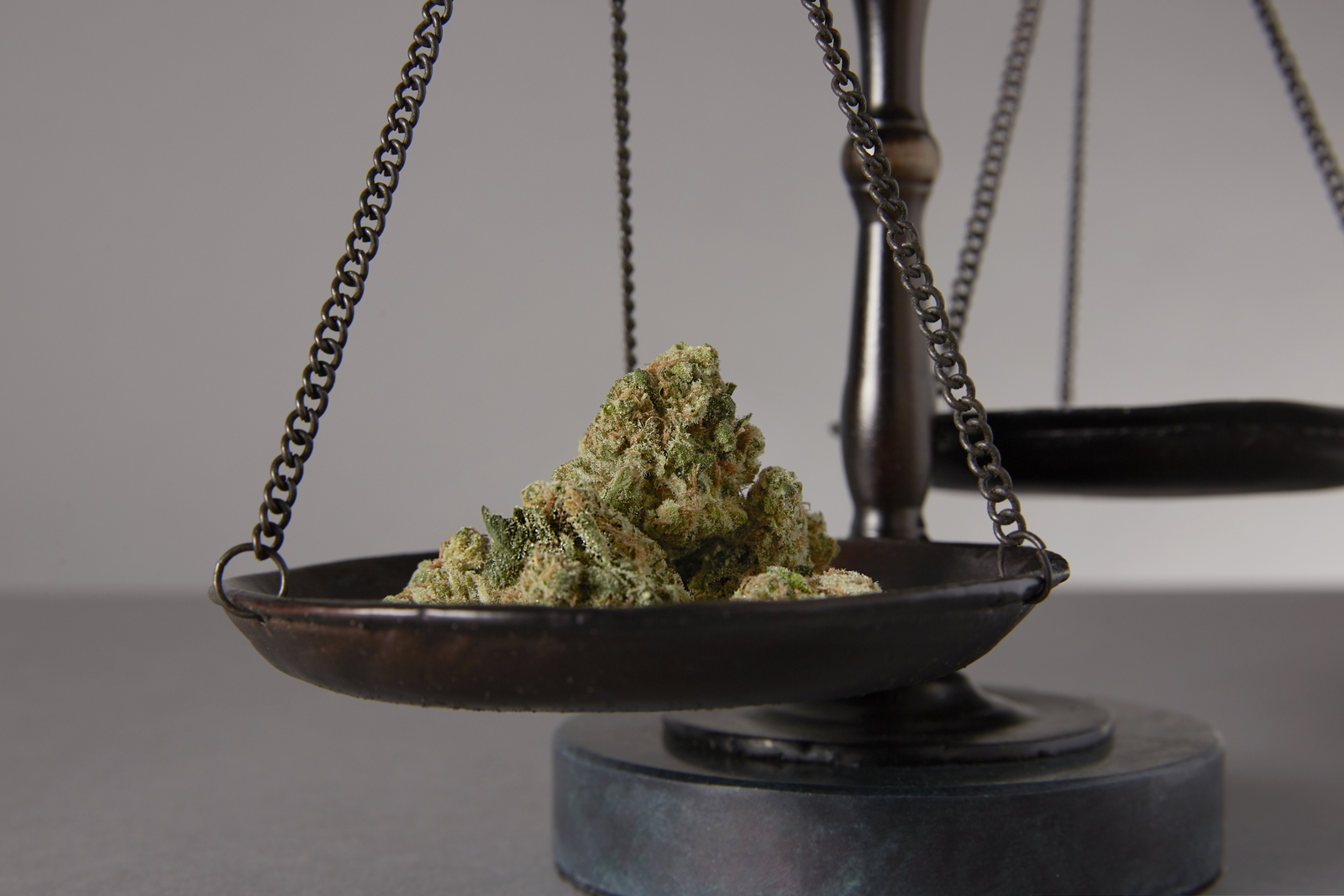For the bulk of American history, people used cannabis plants for paper, textiles, and medicinal purposes. It wasn't until 1913 that individual states started banning marijuana and 1937 that a federal tax law effectively banned it across the country. It wasn't until 1970 that weed was labeled a dangerous drug with no medical value. Today, adults in many states can buy weed as easily as they can buy a six-pack of beer.
Clearly a lot can happen in 100 years. Despite still being illegal on a federal level, state-by-state cannabis legislation can be categorized into three major buckets: decriminalization, medical legalization, and adult-use, or recreational, legalization. Here, we'll untangle all three and review the ways cannabis bills become laws.
Decriminalization
Cannabis decriminalization is the elimination or reduction of criminal penalties for cannabis use and possession. Decriminalization does not make cannabis legal to purchase, sell, or consume. It simply means the state won't prosecute someone with a small amount and no intention to sell it. When a state decriminalizes cannabis, they are essentially telling law enforcement that cannabis possession is no longer a priority. According to the Drug Policy Alliance, more than 1.5 million drug arrests are made in the U.S. each year, the majority of which are non-violent and for possession only. Decriminalization can help reduce this arrest rate and, in turn, the country's mass incarceration problem.
 Photo by: Gina Coleman/Weedmaps
Photo by: Gina Coleman/WeedmapsImage lightbox

Beginning with Oregon in 1973, states started to eliminate or reduce criminal penalties for those caught possessing small amounts of marijuana. More than half of US states and the District of Columbia have decriminalized marijuana or reduced penalties and eliminated the threat of jail time. Several organizations are working to decriminalize marijuana at the federal level. The Marijuana Opportunity Reinvestment and Expungement (MORE) Act, introduced in 2019, would decriminalize marijuana and remove it from the federal list of prohibited drugs. The act also includes provisions for helping communities that have been devastated by the War on Drugs.
Medical legalization
Medical marijuana laws allow patients with qualifying medical conditions to legally access the plant. In 1978, New Mexico became the first state to recognize the medical potential of marijuana when it allowed patients suffering from glaucoma and cancer to legally access it through a research program. Impassioned testimony from patients who had been helped by marijuana helped change the laws in New Mexico. They described the health consequences of buying untested weed from the unlicensed market and the constant threat of arrest, fines, and jail time.
 Photo by: Gina Coleman/Weedmaps
Photo by: Gina Coleman/WeedmapsImage lightbox

Today, medical marijuana legislation is so widespread that only two states do not currently allow any form of cannabis — Idaho and Nebraska. For the rest, it's a patchwork of medical marijuana laws. Twenty-three states outlaw recreational use but allow some form of medical marijuana and a further 12 allow only CBD products derived from hemp plants that have less than 0.3% THC. How much, in what format, and where you're allowed to consume all vary greatly state to state. The list of qualifying conditions can also be extremely limited or expansive depending on the state.
While medical marijuana laws can be highly confusing, the argument for them is a consistent throughline: those who need it should have access to safe, affordable, lab-tested cannabis.
Recreational legalization
Adult-use cannabis, which is also commonly referred to as recreational cannabis, is just that: cannabis that has been made legal for adults to use whether they have a medical condition or not. Recreational or adult-use cannabis laws make purchasing weed similar to purchasing alcohol, though there are typically limits to how much consumers can buy or possess at one time.
As of late 2020, 15 U.S. states have legalized adult-use marijuana. In addition to purchasing weed from licensed retailers, adults are also allowed to grow anywhere from three to 12 plants for personal use depending on the state. A few states have made provisions for on-site consumption at licensed facilities, though all adult-use states ban public consumption. More recent adult-use legislation also took pains to decriminalize possession (if the state hadn't already). Some states even set up procedures to automatically expunge marijuana convictions, the argument being why continue to punish people for something that's legal?
It's worth noting that states with medical marijuana programs typically retain those programs even after cannabis is legalized for recreational use. After California's adult-use laws wreaked havoc on the state's medical program and made cannabis prohibitively expensive for many patients, some states added measures to avoid the same fate.
How does a cannabis legalization bill become law?
There are two main routes states can take to legalize marijuana: ballot initiative or legislative action. The main difference between the two is that voters approve ballot initiatives and legislative measures move through the state's legislatures and governors sign them into law.
When it comes to medical marijuana laws, most states did it via legislative action while a handful passed via ballot initiative. The opposite is true for recreational legislation. Of the 15 states that have legalized recreational marijuana, 13 did it by getting a measure on the ballot that voters approved. Only Illinois and Vermont went the legislative action route, meaning representatives in those states approved the bill each governor eventually signed into law.
 Photo by: Gina Coleman/Weedmaps
Photo by: Gina Coleman/WeedmapsImage lightbox

No matter how cannabis bills become law, everyday cannabis advocates are pivotal to the process. Whether they collect signatures, contact lawmakers, or testify before governing bodies, engaged citizens always play a huge role in getting cannabis legislation passed. After all, if it weren't for the efforts of LGBTQ activists during the AIDS epidemic, it's hard to say whether so many states would have legal cannabis today.

